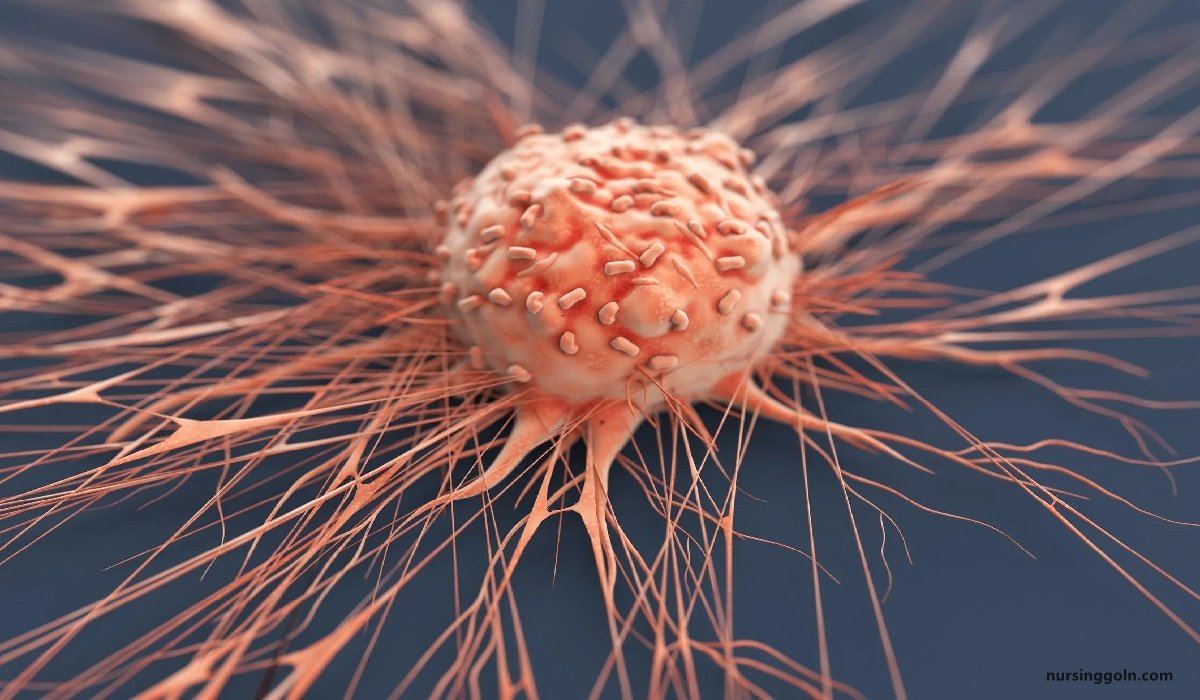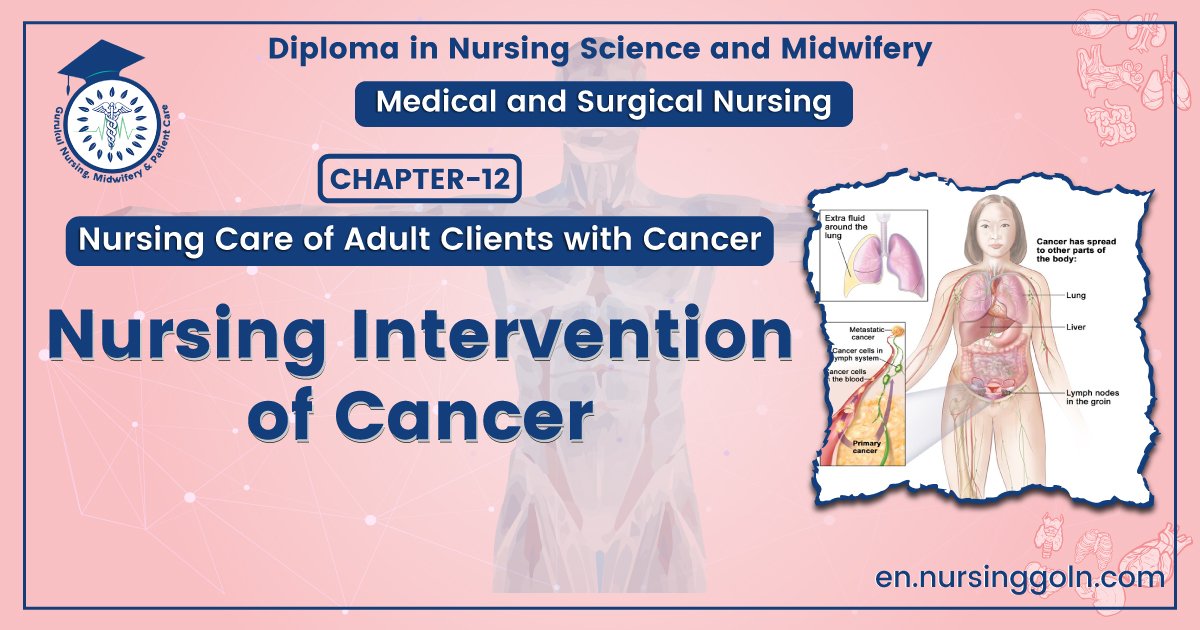Nursing intervention of cancer – This course is designed to understand the concept of community health nursing: nurses’ roles and interventions in family health, school health, occupational health, environmental health, elderly health care, gender issues, disaster management and principles and terminology of epidemiology. The aim of the course is to acquire knowledge and skills in community health nursing.

Nursing intervention of cancer
Maintaining Tissue Integrity
- Stomatitis. Assessment of the patient’s subjective experience and an objective assessment of the oropharyngeal tissues and teeth are important and for the treatment of oral mucositis, Palifermin (Kepivance), a synthetic form of human keratinocyte growth factor, could be administered.
- Radiation-associated skin impairment. Nursing care for patients with impaired skin reactions includes maintaining skin integrity, cleansing the skin, promoting comfort, reducing pain, preventing additional trauma, and preventing and managing infection.
- Alopecia. Nurses provide information about hair loss and support the patient and family in coping with changes in body image.
- Malignant skin lesions. Nursing care includes cleansing the skin, reducing superficial bacteria, controlling bleeding, reducing odor, protecting the skin from further trauma, and relieving pain
Promoting Nutrition
- Anorexia. Anorexia may occur because people feel full after eating only a small amount of food.
- Malabsorption. Surgical intervention may change peristaltic patterns, later gastrointestinal secretions, and reduce the absorptive surfaces of the gastrointestinal mucosa, all leading to malabsorption.
- Cachexia. Nurses assess patients who are at risk of altered nutritional intake so that appropriate measures may be instituted prior to nutritional decline.
Relieving Pain
- Assessment. The nurse assesses the patient for the source and site of pain as well as those factors that increase the patient’s perception of pain.
- Cancer pain algorithm. Various opioid and nonopioid medications may be combined with other medications to control pain as adapted from the World Health Organization three-step ladder approach.
- Education. The nurse provides education and support to correct fears and misconceptions about opioid use.

Decreasing Fatigue
- Assessment. The nurse assesses physiologic and psychological stressors that can contribute to fatigue and uses several assessment tools such as a simple visual analog scale to assess levels of fatigue.
- Exercise. The role of exercise as a helpful intervention has been supported by several controlled trials.
- Pharmacologic interventions. Occasionally pharmacologic interventions are utilized, including antidepressants for patients with depression, anxiolytics for those with anxiety, hypnotics for patients with sleep disturbances, and psycho-stimulants for some patients with advanced cancer or fatigue that does not respond to any medication.
Improving Body Image and Self-esteem
- Assessment. The nurse identifies potential threats to the patient’s image experience, and the nurse assesses the patient’s ability to cope with the many assaults to the body image experienced throughout the course of the disease and treatment.
- Sexuality. Nurses who identify physiologic, psychologic or communication difficulties related to sexuality or sexual function are in a key position to help patients seek further specialized evaluation and intervention if necessary.

Monitoring and Managing Potential Complications
- Infection. The nurse monitors laboratory studies to detect any early changes in WBC counts.
- Septic shock. Neurologic assessments are carried out, fluid and electrolyte status is monitored, arterial blood gas values and pulse oximetry are monitored, and IV fluids, blood, and vasopressors are administered by the nurse.
- Bleeding and hemorrhage. The nurse may administer IL-11, which has been approved by the FDA to prevent severe thrombocytopenia, and additional medications may be prescribed to address bleeding due to disorders of coagulation.
Promoting Home and Community-Based Care
- Nurses in the outpatient settings often have the responsibilities for patient teaching and for coordinating care in the home.
- Teaching patients self-care. Follow-up visits and telephone calls from the nurse assist in identifying problems and are often reassuring, increasing the patient’s and the family’s comfort in dealing with complex and new aspects of care.
- Continuing care. The responsibilities of the home care include assessing the home environment, suggesting modifications at home or in care to help the patient and the family address the patient’s physical needs.

Nursing Intervention of a Cancer Patient:
Nursing care can reduce the physical and emotional distress.
1. Surgery management
- Ensure fluid and electrolyte balance
- Nasogastric suction
- Nutritional support
- Wound care
- Activity
2. Chemotherapy management
- Provide clear information to the patient and family about chemotherapy
- Scalp cooling may be needed for certain drugs
- Maintain electrolyte balance
- Maintain oral hygiene
- If extravasation- Apply ice pack for 24 hours, Inj oradexon locally subcutaneous (SC) and intradermal (ID)
3. Radiation management
- Provide information
- If skin reaction occurs avoid all perfumes
- Maintain nutrition.
Read more:
